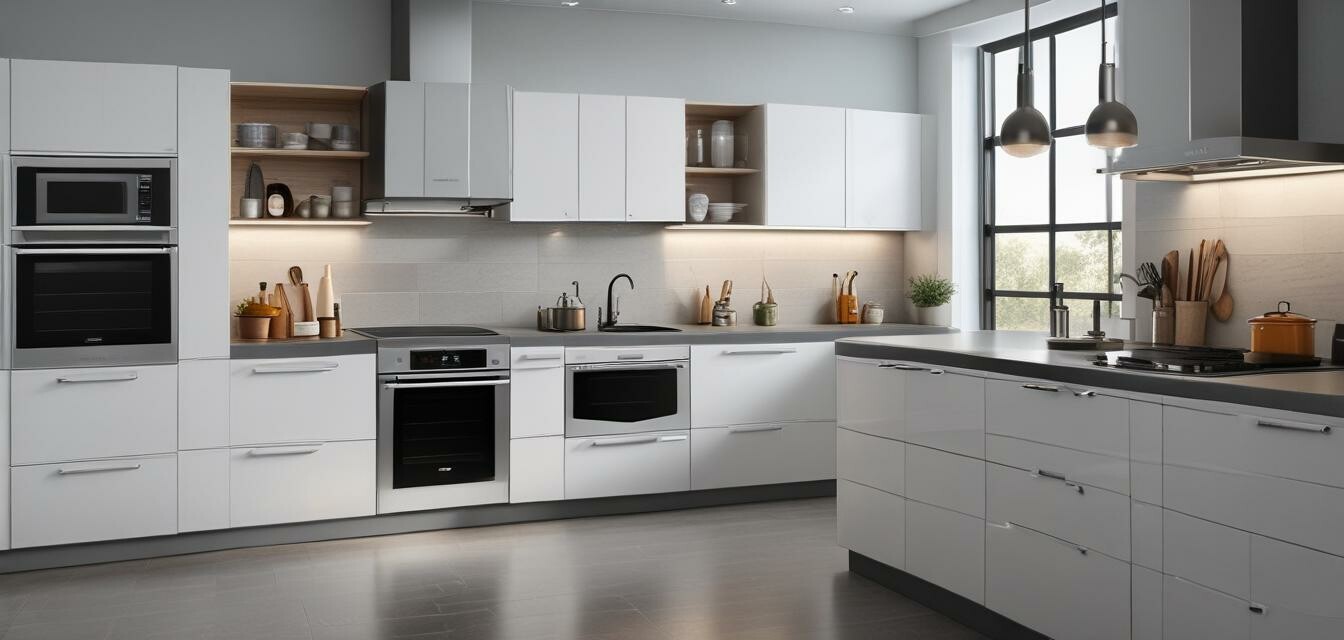
How to Set Up a Smart Kitchen: A Beginner’s Guide
Key Takeaways
- Choose essential smart appliances that enhance your cooking experience.
- Integrate technology smoothly into your kitchen space.
- Utilize smart devices for convenience and efficiency.
- Maintain your appliances for longevity and optimal performance.
- Embrace new cooking techniques that smart appliances offer.
In today’s tech-driven world, setting up a smart kitchen can transform your cooking experience. Smart appliances not only simplify your culinary tasks but also add a modern touch to your kitchen aesthetic. This guide is designed for beginners who want to make the transition to a high-tech cooking environment enjoyable and straightforward. We will explore essential smart appliances, integration tips, and more to help you get started.
Understanding Smart Appliances
Smart appliances are devices that connect to the internet and can be controlled remotely or programmed for convenience. These appliances often come jam-packed with features aimed at improving efficiency, saving energy, and enhancing your cooking experience. Below is a list of essential types of smart kitchen appliances you might consider:
- Smart Ovens: Allow you to control cooking from your smartphone and often come with preset recipes.
- Smart Refrigerators: Keep track of inventory, manage expiration dates, and may even suggest recipes based on what you have.
- Induction Cooktops: Offer precise temperature control and are energy efficient.
- Touchless Faucets: Promote hygiene and reduce mess while cooking.
- Bluetooth-Enabled Devices: Enhance functionality for specific cooking tasks.
Choosing the Right Appliances for Your Smart Kitchen
Selecting the right appliances is crucial for setting up your smart kitchen. Consider the following factors while choosing:
| Appliance Type | Key Features | Benefits |
|---|---|---|
| Smart Oven | Wi-Fi connectivity, remote control, built-in recipes | Flexibility in cooking, convenience of monitoring remotely |
| Smart Refrigerator | Inventory tracking, recipe suggestions, touchscreen interface | Minimized food waste, enhanced meal planning |
| Induction Cooktop | Quick heat-up, precise temperature control | Energy-efficient cooking, fast meal preparation |
| Touchless Faucet | Motion sensor activation, water flow control | Improved hygiene, water conservation |
| Bluetooth Device | Sync with smartphones for operation and monitoring | Convenience in cooking tasks, connectivity |
Integrating Smart Technology into Your Kitchen
After selecting the right appliances, integration is the next step. Here are some helpful tips:
Tips for a Smooth Setup
- Identify Your Needs: Prioritize appliances that fit your cooking habits and lifestyle.
- Plan Your Layout: Position devices for easy access and ergonomic convenience.
- Maximize Connectivity: Ensure your appliances connect effortlessly with your Wi-Fi network.
- Read Instructions: Familiarize yourself with manuals to set up and utilize smart features.
- Consider Voice Integration: If you use smart speakers, ensure your appliances are compatible.
Maintaining Your Smart Kitchen Appliances
Regular maintenance keeps your appliances operating efficiently.
Maintenance Checklist
- Check and update software as necessary.
- Clean appliance surfaces to avoid buildup of grime.
- Inspect connections for any loose cables.
- Test smart features regularly to ensure they are functioning.
- Follow specific cleaning guidelines as outlined in the user manual.
Making Use of Advanced Features
Smart appliances come equipped with innovative techniques that can simplify cooking. Embrace these features to enhance your culinary skills:
- Remote Monitoring: Keep an eye on cooking times and temperatures from your smartphone.
- Smart Recipes: Utilize apps that provide recipes compatible with your devices.
- Compatibility with Smart Homes: Integrate your kitchen devices into your broader smart home system.
- Energy Monitoring: Some appliances track energy usage, helping you optimize efficiency.
Conclusion
Setting up a smart kitchen is an exciting journey that combines technology with cooking. By choosing the right appliances, integrating them effectively, and maintaining them well, you can elevate your cooking experience significantly. For more tips on specific devices, check out our guides on Bluetooth-Enabled Devices, Energy-Efficient Appliances, and Touchless Faucets. Transform your kitchen today, and enjoy the benefits of modern cooking!